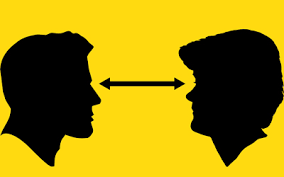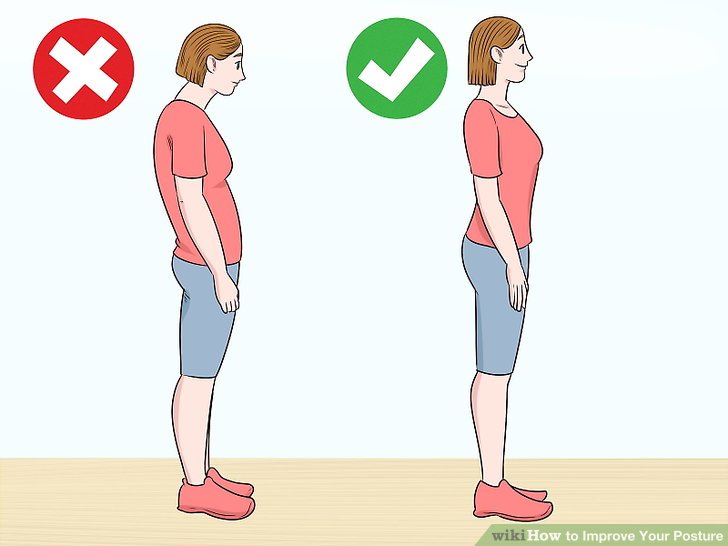Body language is nonverbal communication that involves body movement. “Gesturing” can also be termed as body language which is absolutely non-verbal means of communication. People in the workplace can convey a great deal of information without even speaking; through nonverbal communication. Not all of our values, beliefs, thoughts and intentions are communicated verbally. In an ongoing communication, most of those are communicated non-verbally. This article will help you in learning the tips on how to improve body language. You can get idea on how to develop your body language.
In Non-verbal communication, our human body expresses our feelings and intentions through conscious and unconscious movements and postures, accompanied by gestures, facial expressions, eye contacts and touch. This collectively forms a separate language of the body within the ongoing communication. This is called Body Language.
How does body communicate?
Our human body speaks through the conscious and unconscious movements and postures, hand gestures, facial expressions, eye movements and touch. Each of these physical movements of the body parts could be seen as separate words and can be interpreted differently by other human beings within a given context of communication. Body language is one of the effective parts of corporate communication
Why is body language crucial?
Since interpretations of body language differ from people to people and cultures to countries it is important to learn about them. Body language alone comprises of 55% of total communication whereas spoken words comprise of 7% and tone of voice comprise 38%. This is one of the
steps to improve impromptu communication easily.
Parts of Body to Make Gesture
From head to toe, here are the groups when grouped for body parts:
The Head
Movement and placement of the head, back to front, left to right, side to side, including the shaking of hair. This is one of the advanced tips on how to improve body language.
Facial Expressions
The face has many muscles (anywhere between 54 and 98, depending on who you ask) that move several areas of the face. Face expression works as one of the major interpersonal skills as part of business communication Each combination of movements of the following face elements communicates a state of mind:

- Eyebrows – Up, down, frowning.
- Eyes – Left, right, up, down, blinking, eye dialiation.
- Nose – Wrinkle (at the top), flaring of the nostrills.
- Lips – Smiling, snarling, puckered, kissing, opened, closed, tight.
- Tongue – In, out, rolled, tip up or down, licking of lips.
- Jaw – Open, closed, clinched, lower jaw left or right.
Body Posture
The way you place your body and arms and legs, in relation to each other, and in relation to other people. This is one of the advanced tips on how to improve body language. This pattern can be learnt easily by joining any effective institution.
The way you place your body and arms and legs, in relation to each other, and in relation to other people:
- Body proximity – How far or close to other people.
- Shoulder movements – Up, down, hanging, hunched.
- Arm placement – up, down, crossed, straight.
- Leg and feet placement – straight, crossed, weight placement, feet towards speaking partner or pointing elsewhere, dangling of shoes.
- Hand and finger gestures – How you hold and move your hands and fingures are particularly insightful in reading people.
- Handling and placement of objects (eg. pens, papers, etc). – The odd one out… technically not a body part, but objects do play a big role in reading body language.
The Body Language of Gestures
“It is an expressive movements of a part of a body especially hands or heads”.
It has vital effect or part in oral communication.
Gesture of a person convey much more than what he speaks.
Waving of hand to indicate good bye or draw the attention of a person.
Shaking Hands display the friendship
Pointing index finger indicates allegation or charge
The Body Language of Posture
- Means “an attitude or position of body”
- Each movement of body has expressive & defensive functions.
- The way, in which we sit or stand, walk in walk out tells a lot about us.
- A good posture indicates confident attitude.
- Body Language of Movement
Facial Expression
- All facial organs on human face indicates facially expressive message.
- These are hair, forehead, eyebrows, eyes, mouth, chin, nose, lips, ears, teethe, tongue etc.
- Facial expressions comes naturally hence it is beyond the control of speaker. This is one of the advanced tips on how to improve body language.
Examples of Facial Expression
- A Smile expresses friendliness & affection
- Raised eyebrows convey surprise
- Furrowed forehead expresses worries & anxiety
- Frown shows dislike or suspicion
- Attire, Dress and Appearance
The kind of dress we use & the way in which we groom ourselves shows our status & attitude
We influenced how others look & clothes they wear
Physical attractiveness plays an important role in our assessment of people
Persons dress & physical appearance conveys great deal of information about him
Eye Contact

- Eye contact has very much in face-to-face communication.
- Absence of eye contact shows lack of interest & understanding.
- We look faster than listen or talk.
- Eyes are human windows except them there is no life.
- The speaker must look in to the eyes of the audience from right to left & left to right this will built up the confidence & eliminate the nervousness.
- It build the rapport between the speaker & the listener.
Silence
- “speech is silver but silence is golden”
- It establishes the relationship between the communicators
- Moments of silence – do not know how to continue
Miscellaneous Body Language Examples
Arms Crossed in front of the Chest
This is one of the body language examples that indicate that one is being defensive. The body language meaning of crossed arms may also show disagreement with opinions and actions of other people with whom you are communicating. This plays a major importance of learning English language for business.
Biting of nails
Nail biting demonstrates nervousness, stress, or insecurity. Many people bite nails without realizing they have the habit.
Hand on cheek
This body language example indicates that one is lost in thought, maybe considering something. When your hand is on your cheek and your brows are furrowed you may be in deep concentration.
Finger tapping or drumming
This action demonstrates that one is growing tried or impatient while waiting.
Touching the nose
Touching or rubbing the nose signifies disbelief, rejection, or lying about something.
Prisk rubbing of the hands
This may show that the hands are cold, which may mean that one is excited about something, or waiting eagerly.
Placing Finger tips together
This is called “steepling,” or placing fingertips together to demonstrate control or authority
Open palms, facing upward
This gesture is a sign of honesty, submission, and innocence. This is how some people show submission and respect.
Head in hands
The body language meaning of this gesture may be that of boredom, being upset, or being ashamed, so one does not want to show their face.
Locking of ankles
Whether you are sitting or standing, when your ankles are locked, you are communicating apprehension or nervousness.
Head nodding
This gesture usually signifies agreement or bowing, s submissive gesture that shows one is going along with another person’s opinions.
Lowered head
This indicates one is hiding something. When you lower your head while you are being complimented, you may be showing shyness, shame, or timidity. It may also convey that you are keeping distance from another person, showing disbelief, or thinking to yourself. This is helpful and one of the eminent steps to control fear to receive inevitable success.
This specific article covers the specific requirement of how to improve body language with pictures. You can learn effective language communication and corporate body language by joining Engconvo.


